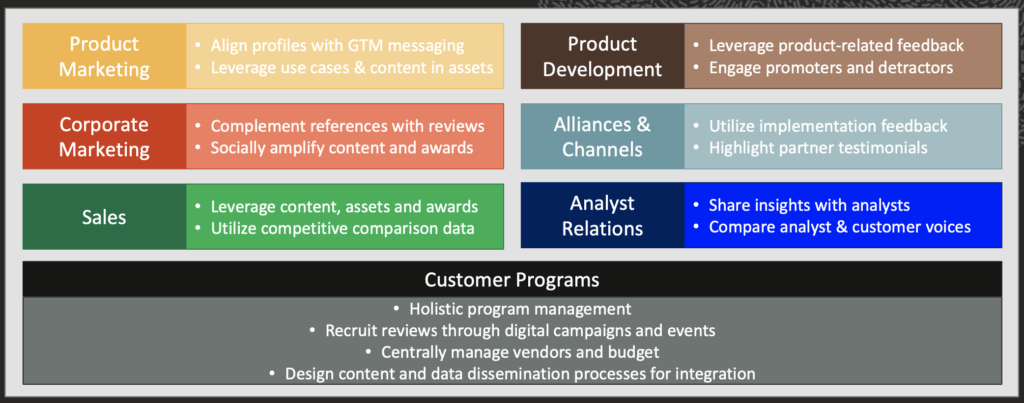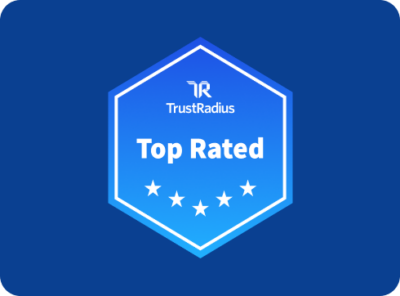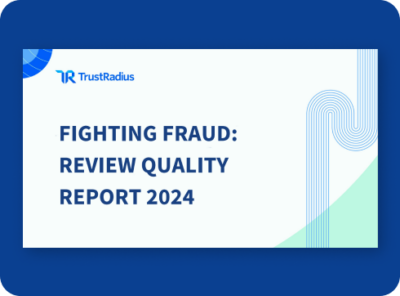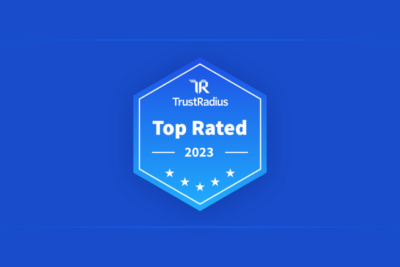How Oracle Uses Reviews To Fuel Critical Marketing Goals
Reviews are the number one way buyers find information about software products outside of vendor control.
Despite the lack of complete control, vendors still have a large role to play in increasing reviews and getting more value out of them (and no, this post is not about incentives, paid reviews or other gimmicks).
Our research laid out in the 2020 Buying Disconnect shows that 35% more vendors will embrace a review strategy this year. Marketing executives realize that reviews significantly influence buyers and that they need a plan to leverage these content assets.

Oracle caught on to the importance of reviews years ago. In response, they made sweeping changes to their marketing, sales and customer experience practices.
But what exactly were these changes — and how has Oracle been successful as a result?
This is why we partnered with Lauren Harris, Director of Global Customer Programs at Oracle, to share with us some details of Oracle’s customer review strategy.
In our webinar “How Oracle Uses Reviews to Fuel Critical Marketing Goals,” Harris shares:
- Why Oracle needed to prioritize their review strategy
- Four key value pillars of Oracle’s review strategy
- How Oracle implements a holistic approach to gathering and using reviews
- The importance of review platform partnerships
3 Reasons Oracle Needs Customer Reviews
Oracle has seen a shift in macro buyer trends over recent years, one that is much more self-service than it used to be. With shifting buyer trends, Oracle faced three main challenges that needed to be met with a new marketing approach.
1. The trust gap between buyers and vendors
Buyers today do not trust vendor-generated content and sales pitches. They value transparency.
“Based on some recent [TrustRadius research], they found that 89% of buyers don’t trust their sales reps,” Harris explains. “77% want transparency from their vendors about product limitations, but only 40% [of buyers] think that vendors are actually telling them about their limitations.”
That large gap between customer expectations and what vendors want to offer can cause damage to sales. In an effort to make their product look like the best solution, sales reps actually push buyers away.
This is why buyers, in part, turn to reviews. Buyers seek trustworthy and helpful information they need to make informed decisions — the information that they perceive sales reps to be hiding.
2. Shifting influence
This gap in trust between buyers and sales has led to a large shift in influence in the buyer journey.
“Buyers aren’t using sales reps and analysts near to the extent that they were,” says Harris. “Only 24% of buyers use analyst reports during selection, and this is a pretty big disconnect because 48% of vendors are still relying heavily on analysts.”
Old ways of selling don’t match up with the buyer’s process today.
Reviews help fill that gap.
3. Generational differences
Most tech buyers today are millennials. It comes as little surprise that younger buyers follow a different path than their predecessors.
“They use more sources of information during evaluation, and they just aren’t as interested in the traditional vendor-led journey.”
Millennials know how to find the information they want — and they find it quickly, without much human interaction.
“Rather than hearing from sales and getting vendor-sponsored white papers, they want to hear from real people that have real experiences with the solutions they’re considering,” shares Harris. “They want a simplified do-it-yourself type journey.”
They can hear from real people, without actually speaking to them in person at a meeting, networking event, or tech conference. Reviews are at their fingertips on major review platforms including TrustRadius.
These three challenges were catalysts for a new marketing approach. “There are of course many, many complementary solutions that a vendor can take individually to meet these unique challenges that were being faced with,” explains Harris. “But reviews are a unique initiative in that it has the ability to meet all three.”
4 Value Pillars of Reviews for Oracle: Advocacy, Trust, Enablement, & Experience
Reviews are more than just a response to challenges. They offer value to Oracle in four key ways that go beyond the marketing department.
“When reviews are incorporated throughout and standardized in the way that we do business from marketing to sales, advocacy, and customer experience, that’s when the most value will be realized.”
Advocacy
Reviews enable advocates to share and expand their expertise. Customers have a chance to build their social capital, peer connections and professional recognition by leaving reviews.
Trust
Real users can share real experiences that sales reps can’t. Quality reviews — not just rankings — offer prospective buyers use cases, successes, limitations and comparisons.
Enablement
The honest information used in reviews simplifies the buyer’s journey. It creates a more DIY approach — readers can read how many reviews they want, from people like them, on multiple platforms. Reviews can also be used to help sales reps and marketers deliver more relevant and compelling information.
Experience
Oracle uses customer feedback to identify themes, competitor comparisons and analytics that are in turn used to create a better CX and buyer journey.
The holistic view towards the value of reviews has led to enterprise-wide adoption of reviews.
The Nuts and Bolts: How Oracle Holistically Leverages Reviews
Oracle is a large enterprise with 430,000 customers and 136,000 employees. It is one thing for a global enterprise of this size to understand the importance of reviews — and another entirely for it to actually lay out a concrete initiative.
What does enterprise-adoption of reviews actually look like?
It looks like significant change management and full buy-in from multiple lines of business.
“Through a team of six, including myself, we holistically manage the program, vendor’s budget, really just the infrastructure that supports the program focusing always on the next evolution of the program.” This team works closely with other departments to create scalable processes to leverage reviews.
Harris’ team works with:
- Product marketing
- Product development
- Corporate marketing
- Alliances & Channels
- Sales
- Analyst Relations
- Customer programs

In each line of business, reviews hold potential for pieces of content, customer engagement, sales communications and customer experience.
Each customer is asked to leave reviews. The ask for reviews is not a one-off CTA at the bottom of an email. Oracle actively recruits customer feedback in big ways.
“I have two team members working on recruitment with one focused on event and the other on ongoing digital campaigns,” explains Harris. “We work closely with our vendors to constantly improve our recruitment abilities focusing on the quality of reviews and review count as well as event performance on an ongoing improvement.”
This strategy has drawn Oracle 25,000 reviews across three platforms, with 95% being positive or neutral.
“On the TrustRadius platform, we have achieved 10,000 Oracle ratings and reviews, the most of any of the vendors that we work with and 15 award recognitions.” These reviews and awards are potential pieces of content that are used across departments, internally and externally.
Review platforms provide relevant support to Oracle
Oracle’s holistic approach to scalable, cross-departmental adoption of reviews is impressive. This integrated approach relies on one key element: a steady count of reviews. And reviews need a home.
Review platforms provide a trustworthy, consistent and accessible place for customers to read and share reviews. This is great for vendors, because it is organic content that potential buyers will view. But it is more than that.
Review platforms, such as TrustRadius, provide enterprises the platform, support, and customer data they need to implement their review strategy.
With TrustRadius alone, Oracle saw a 91% increase in reviews this past year.
“They work with us continuously to discover value and to continue to mature this program,” shares Harris. “Customized reporting and product innovation that helps us scale are common initiatives and discussions that we have with the TrustRadius team. They have been an amazing resource.”
The increase in reviews has led more views from prospective buyers. Oracle has had over 69,000 views and have identified over 800 new advocates. In Oracle’s case, over 37,000 of their views came from executives alone. These are the people Oracle wants to be in front of.
“All of this growth has provided and continues to provide a strong foundation to support our value propositions for this program which again our advocacy, building trust, enabling sales and marketing, and improving customer experience,” Harris concludes.
Clearly B2B brands can create a fresh look for marketing efforts using reviews. How are you going to use reviews for your advantage?




